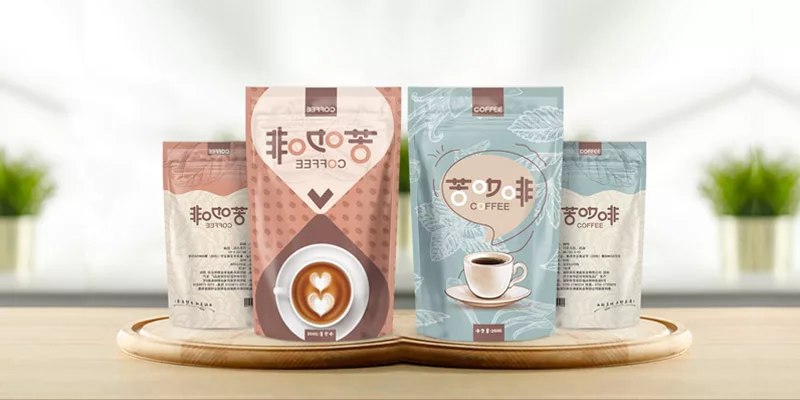
Why Choose Wanhao
At Wanhao, we pride ourselves on providing top-quality coffee bags that cater to a wide range of needs, from coffee beans to ground coffee packaging. Our coffee bags are not just about containment; they are a vital part of the overall coffee experience. We offer a variety of customization options, ensuring that your coffee bags stand out in the market while preserving the freshness and aroma of your product. Equipped with state-of-the-art rotogravure printing technology, we can print up to 10 vibrant colors, making your brand visually striking. Our team of experts is committed to guiding you through every step of the design process, from choosing the right materials to selecting the perfect thickness for your packaging.
Wanhao is fully certified with BRC, SGS, HACCP, QS, and ISO9001 standards, which guarantees the safety and quality of our coffee bags. These certifications are essential in the food packaging industry and reflect our dedication to maintaining the highest quality in our products.
What is a Coffee Bag?
Coffee bags are specially designed packaging solutions meant to protect the freshness and flavor of coffee beans or ground coffee. These bags come in various shapes, sizes, and materials to suit different types of coffee and storage needs. The primary function of a coffee bag is to provide an airtight seal that prevents exposure to air, moisture, and light, which can degrade the quality of the coffee.
Many coffee bags feature a one-way valve that allows carbon dioxide, released by freshly roasted coffee beans, to escape without letting in oxygen, which can cause the coffee to go stale. The materials used in coffee bags typically include a combination of paper, plastic, and aluminum foil, each chosen for its ability to protect the coffee while also being durable and cost-effective. Some coffee bags are designed with resealable zippers, tear notches, or other user-friendly features that make them convenient for both consumers and manufacturers.
The Evolution of Coffee Bag
The history of coffee bags is intertwined with the evolution of coffee consumption itself. In the early days, coffee was often stored in simple sacks or containers that did little to preserve its freshness. As coffee became more popular and the demand for quality increased, so did the need for better packaging solutions.
The introduction of the one-way valve was a significant breakthrough in coffee packaging. This technology allowed roasters to package their coffee immediately after roasting, without waiting for the beans to “degas.” The valve ensured that the coffee remained fresh while preventing the bag from bursting due to the buildup of carbon dioxide.
Over time, the materials used in coffee bags have also evolved. The use of multi-layered materials, combining paper, plastic, and aluminum, has become the standard in the industry, offering superior protection against environmental factors. Additionally, the rise of eco-conscious consumers has led to the development of recyclable and biodegradable coffee bags, reflecting the industry’s shift towards sustainability.
Today, coffee bags are more than just packaging; they are a critical part of a brand’s identity. With the ability to customize every aspect of the bag, from the material to the design, coffee companies can create packaging that not only preserves the product but also tells a story.
Custom Coffee Bags FAQs
Question 1: What material is the coffee bag made of?
Coffee bags are typically made of a combination of materials including paper, plastic, and aluminum foil. These materials are chosen for their ability to protect the coffee while also being durable and cost-effective. Some coffee bags also feature one-way valves and may have resealable zippers, tear notches, or other user-friendly features.
Question 2: Is the material of coffee bags environmentally friendly?
The materials used in coffee bags can vary in terms of environmental friendliness. While traditional coffee bags made of paper, plastic, and aluminum foil may not be as eco-friendly as some would like, the industry has seen a shift towards sustainability. The rise of eco-conscious consumers has led to the development of recyclable and biodegradable coffee bags. However, not all coffee bags are environmentally friendly. It depends on the specific materials used and the manufacturing processes employed.
Question 3: How long can coffee bags be stored for?
The storage life of coffee bags can vary depending on several factors such as the quality of the materials used, the presence of features like one-way valves to protect against air and moisture, and the storage conditions. Generally, coffee bags can help preserve the freshness and flavor of coffee for an extended period. When properly sealed and stored in a cool, dry place away from light and air, coffee in a quality coffee bag can stay fresh for several months. However, it’s important to note that the exact storage time can vary depending on the type of coffee (beans or ground) and the specific characteristics of the bag.
Question 4: Can coffee bags be reused?
Some coffee bags may be designed with features that make them potentially reusable to a certain extent. For example, if a coffee bag has a resealable zipper, it may be possible to reuse it for storing other items or for a limited period for coffee if properly cleaned and dried. However, in general, coffee bags are primarily designed for single-use packaging of coffee. Reusing them for coffee storage may not always be ideal as it may compromise the freshness and quality of the coffee over time. Additionally, not all coffee bags are suitable for reuse due to their construction and materials.

